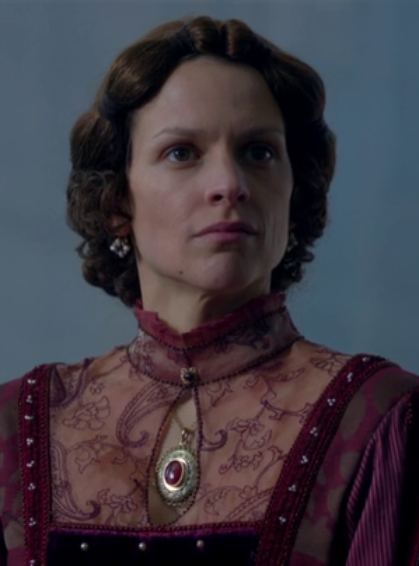Bloody Meadow at Towton in Yorkshire where the Lancastrians lost the decisive battle in the Wars of the Roses. Henry VI lost his throne and around 1% of the male population of England is thought to have lost their lives. Queen Consort Margaret of Anjou also lost her crown and fled to Wales.
(photo David Pickersgill)
The trilogy of plays that make up Henry VI are gruesome, unforgiving and not exactly great PR for Margaret. Her great monologue in part three sees her humiliate her most hated enemy, Richard of York, by placing a paper crown on his head then having that and his head removed. While historians argue over whether she really did order the execution of the Duke of York, there's no doubt having him out of the way made things a little easier for Margaret for a little while at least. She'd been waging political and physical battles with the duke for five years with most of the spoils going the way of the increasingly popular York. But in 1460 Margaret's Lancastrians won a famous battle at Wakefield and Richard of York was dead, his head displayed on a spike wearing a paper crown.
Richard, 3rd Duke of York and great enemy of Queen Consort Margaret of Anjou - he is shown here in a stained glass window at St Laurence's Church in Ludlow in Shropshire
Towton, just a few months later, was the revenge of the white rose. York's son, Edward, defeated the Lancastrians in a battle that is said to have involved around 10% of the male population of England and left around 1% of all the men of the country dead. Edward claimed the crown and Henry fled into exile. Margaret would return in 1471 to try and reclaim the crown, more for her son than her husband, but effectively her time as queen consort was ended by the Battle of Towton.
An early 20th century imagining of the Battle of Towton, fought in snow on March 29th 1461
And so, with blistering sunshine and temperatures of 30 degrees Celsius as a backdrop, the Globe is bringing Shakespeare's plays - and with them Margaret - to life once more at the scenes of some of the great battles of the war. Towton played host this weekend and Tewkesbury, St Albans and Barnet will all welcome the tour over the next few months (details at Globe Henry VI tour). It comes as Veerle Baetens completes her turn as Margaret in the BBC adaptation of The White Queen. Her Margaret has been snarling, inquisitive and desperate for a fight. Shakespeare's interpretation was colder, steelier and quieter but both share a sense of menace that none of the men around her can quite handle.
Veerle Baetens as Margaret of Anjou in the BBC One adaptation of The White Queen
We all know how the story ends but it will be interesting to see whether 2013 audiences are more sympathetic to the strange and angry figure of that impenetrable and still mysterious Queen Consort, Margaret of Anjou.




No comments:
Post a Comment